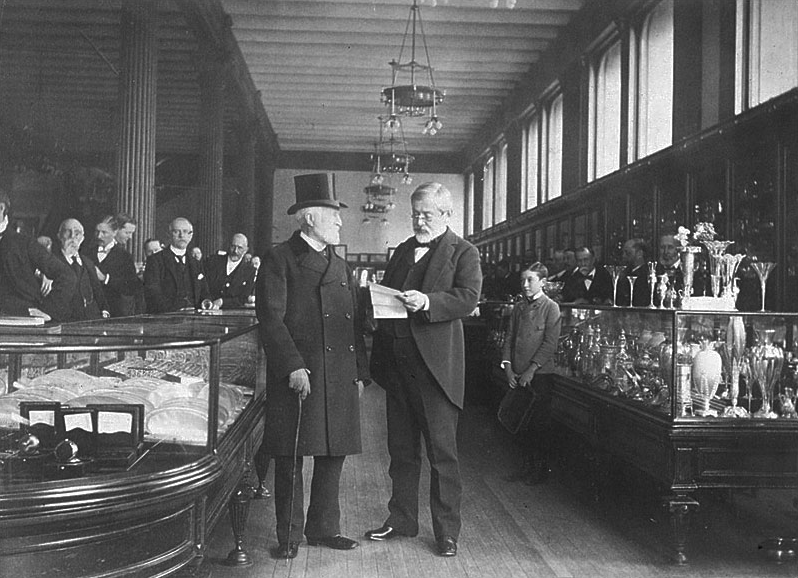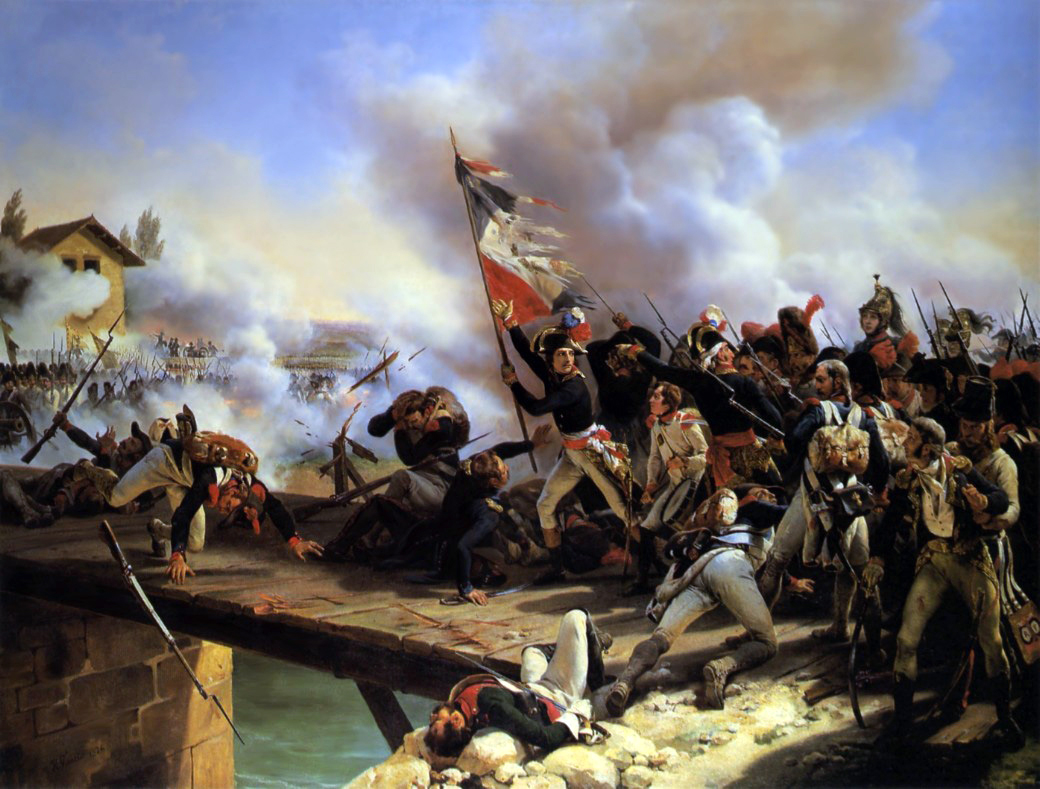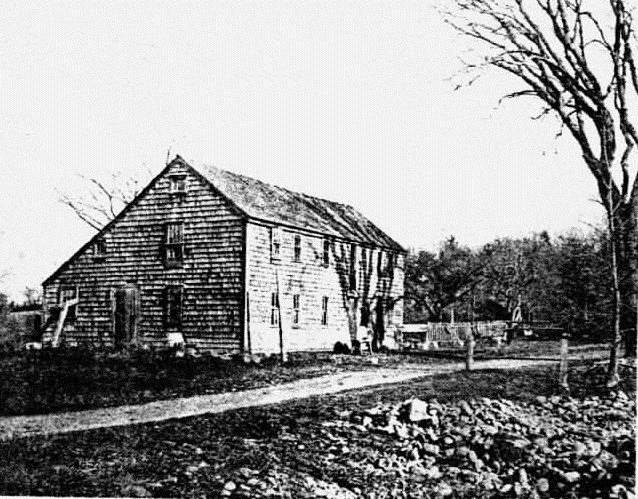|
Consider Tiffany
Consider Tiffany (March 15, 1732 – June 19, 1796) was a British loyalist and storekeeper in Colonial America. He also served as a sergeant during the French and Indian War. He is described in the book ''The Tiffanys of America'' by Nelson Otis Tiffany: "in addition to making his living as a storekeeper and a farmer, was a brave soldier, good churchman, a writer of prose and poetry, and astronomer." To date, his journal is the only firsthand account written of Nathan Hale's capture during the American Revolution. Tiffany was one of the first settlers of West Hartland, Connecticut. One of his manuscripts was donated to the Library of Congress by his patrilineal descendant, G. Bradford Tiffany. It is viewed by historians as an important primary source document for understanding the American Revolution and Nathan Hale. Tiffany wrote a broadside in a thirty four-stanza verse, called "Of the Melancholy Death of Six Young Persons Who Were Killed by Lightning in the Month of June, 1767 ... [...More Info...] [...Related Items...] OR: [Wikipedia] [Google] [Baidu] |
Lyme, Connecticut
Lyme is a New England town, town in New London County, Connecticut, New London County, Connecticut, United States, situated on the eastern side of the Connecticut River. The population was 2,352 at the 2020 United States Census, 2020 census. Lyme is the eponym of Lyme disease. History In February 1665, the portion of the territory of the Saybrook Colony east of the Connecticut River was set off as the plantation of East Saybrook, which included present-day Lyme, Old Lyme, Connecticut, Old Lyme, and the western part of East Lyme, Connecticut, East Lyme. In 1667, the Connecticut General Court formally recognized the East Saybrook plantation as the town of Lyme, named after Lyme Regis, a coastal town in the south of England. The eastern portion of Lyme (bordering the town of Waterford, Connecticut, Waterford) separated from Lyme in 1823 and became part of East Lyme. The southern portion of Lyme (along Long Island Sound) separated in 1855 as South Lyme (renamed Old Lyme in 1857). Both ... [...More Info...] [...Related Items...] OR: [Wikipedia] [Google] [Baidu] |
Charles Lewis Tiffany
Charles Lewis Tiffany (February 15, 1812 – February 18, 1902) was an American businessman and jeweler who founded New York City's Tiffany & Co. in 1837. Known for his jewelry expertise, Tiffany created the country's first retail catalog and introduced the English standard of sterling silver in imported jewelry in 1851. Biography Tiffany was born on February 15, 1812, in Killingly, Connecticut, the son of Chloe (Draper) and Comfort Tiffany. Tiffany was educated at a district school and an academy in Plainfield, Connecticut. Starting at the age of fifteen, he helped manage a small general store founded by his father, the owner of a cotton-manufacturing company. He later worked at the office of his father's mill. The Tiffany family descended from the immigrant Squire Humphrey Tiffany (England, 1630-Swansea, Massachusetts, 1685), who had lived in the Massachusetts Bay Colony since 1660. In 1837, with $1,000 borrowed from his father, Tiffany and a school friend, John B. Young, se ... [...More Info...] [...Related Items...] OR: [Wikipedia] [Google] [Baidu] |
1796 Deaths
Events January–March * January 16 – The first Dutch (and general) elections are held for the National Assembly of the Batavian Republic. (The next Dutch general elections are held in 1888.) * February 1 – The capital of Upper Canada is moved from Newark to York. * February 9 – The Qianlong Emperor of China abdicates at age 84 to make way for his son, the Jiaqing Emperor. * February 15 – French Revolutionary Wars: The Invasion of Ceylon (1795) ends when Johan van Angelbeek, the Batavian governor of Ceylon, surrenders Colombo peacefully to British forces. * February 16 – The Kingdom of Great Britain is granted control of Ceylon by the Dutch. * February 29 – Ratifications of the Jay Treaty between Great Britain and the United States are officially exchanged, bringing it into effect.''Harper's Encyclopaedia of United States History from 458 A. D. to 1909'', ed. by Benson John Lossing and, Woodrow Wilson (Harper & Brothers, 1910) p17 ... [...More Info...] [...Related Items...] OR: [Wikipedia] [Google] [Baidu] |
1732 Births
Year 173 ( CLXXIII) was a common year starting on Thursday (link will display the full calendar) of the Julian calendar. At the time, it was known as the Year of the Consulship of Severus and Pompeianus (or, less frequently, year 926 ''Ab urbe condita''). The denomination 173 for this year has been used since the early medieval period, when the Anno Domini calendar era became the prevalent method in Europe for naming years. Events By place Roman Empire * Gnaeus Claudius Severus and Tiberius Claudius Pompeianus become Roman Consuls. * Given control of the Eastern Empire, Avidius Cassius, the governor of Syria, crushes an insurrection of shepherds known as the Boukoloi. Births * Maximinus Thrax ("the Thracian"), Roman emperor (d. 238) * Mi Heng, Chinese writer and musician (d. 198) Deaths * Donatus of Muenstereifel, Roman soldier and martyr (b. AD 140 Year 140 ( CXL) was a leap year starting on Thursday (link will display the full calendar) of the Julian cale ... [...More Info...] [...Related Items...] OR: [Wikipedia] [Google] [Baidu] |
18th Century In The United States
The 18th century in the United States refers to the period in the United States from 1701 through 1800 in the Gregorian calendar. For articles on this period, see: * History of the United States series: ** Colonial history of the United States ** History of the United States (1776–1789) ** History of the United States (1789–1849) * Historical eras: ** American Revolution ** Confederation period ** Federalist Era The term ''federalist'' describes several political beliefs around the world. It may also refer to the concept of parties, whose members or supporters called themselves ''Federalists''. History Europe federation In Europe, proponents of de ... {{DEFAULTSORT:18th Century In The United States ... [...More Info...] [...Related Items...] OR: [Wikipedia] [Google] [Baidu] |
Loyalists In The American Revolution From Connecticut
Loyalism, in the United Kingdom, its overseas territories and its former colonies, refers to the allegiance to the British crown or the United Kingdom. In North America, the most common usage of the term refers to loyalty to the British Crown, notably with the loyalists opponents of the American Revolution, and United Empire Loyalists who moved to other colonies in British North America after the revolution. Historical loyalism 18th century North America In North America, the term ''loyalist'' characterised colonists who rejected the American Revolution in favour of remaining loyal to the king. American loyalists included royal officials, Anglican clergymen, wealthy merchants with ties to London, demobilised British soldiers, and recent arrivals (especially from Scotland), as well as many ordinary colonists who were conservative by nature and/or felt that the protection of Britain was needed. Colonists with loyalist sympathies accounted for an estimated 15 per cent to ... [...More Info...] [...Related Items...] OR: [Wikipedia] [Google] [Baidu] |
Edmund Rice (1638)
Edmund Rice (c. 1594 – 3 May 1663), was an early immigrant to Massachusetts Bay Colony born in Suffolk, England. He lived in Stanstead, Suffolk and Berkhamsted, Hertfordshire before sailing with his family to America. He landed in the Colony in summer or fall of 1638, thought to be first living in the town of Watertown, Massachusetts. Shortly thereafter he was a founder of Sudbury in 1638, and later in life was one of the thirteen petitioners for the founding of Marlborough in 1656. He was a deacon in the Puritan Church, and served in town politics as a selectman and judge. He also served five years as a member of the Great and General Court, the combined colonial legislature and judicial court of Massachusetts. Biography Edmund Rice's rough birth date of 1594 is reckoned from a 3 April 1656 court deposition in Massachusetts in which he stated that he was 62 years old. His likely birthplace, somewhere in Suffolk in East Anglia, is found through the town of his mar ... [...More Info...] [...Related Items...] OR: [Wikipedia] [Google] [Baidu] |
Tiffany And Co
Tiffany & Co. (colloquially known as Tiffany's) is a high-end luxury jewelry and specialty retailer, headquartered on Fifth Avenue in Manhattan. It sells jewelry, sterling silver, porcelain, crystal, stationery, fragrances, water bottles, watches, personal accessories, and leather goods. Tiffany is known for its luxury goods, particularly its diamond and sterling silver jewelry. These goods are sold at Tiffany stores, online, and corporate merchandising. Its name and branding are licensed to Coty for fragrances and to Luxottica for eyewear. Tiffany & Co. was founded in 1837 by the jeweler Charles Lewis Tiffany and became famous in the early 20th century under the artistic direction of his son Louis Comfort Tiffany. In 2018 net sales totaled US$4.44 billion. In 2019 Tiffany operated 326 stores globally in countries such as the United States, Japan, and Canada, as well as Europe, the Latin America and Pacific Asia regions. On January 7, 2021, French multinational LVMH Mo� ... [...More Info...] [...Related Items...] OR: [Wikipedia] [Google] [Baidu] |
West Hartland, Connecticut
Hartland is a town in Hartford County, Connecticut, United States. The population was 1,901 at the 2020 census. History Residents petitioned the General Court and the legislature incorporated the town in May 1761. Geography The town is bisected by the Farmington River's east branch, now the northern section of Barkhamsted Reservoir after construction of the Saville Dam in 1940. The reservoir and surrounding land, owned by the Metropolitan District Commission (MDC) water authority, divides the town into two halves, East Hartland and West Hartland. According to the United States Census Bureau, the town has a total area of , of which is land and , or 4.39%, is water. Bounded on the north by the Massachusetts border, Hartland is drained by the Farmington River, a tributary of the Connecticut River. The 42nd parallel north and the 73rd meridian west meet in the central western part of town. Hartland is home to three Connecticut State forests, Peoples State Forest, Tunxis State Fo ... [...More Info...] [...Related Items...] OR: [Wikipedia] [Google] [Baidu] |
British America
British America comprised the colonial territories of the English Empire, which became the British Empire after the 1707 union of the Kingdom of England with the Kingdom of Scotland to form the Kingdom of Great Britain, in the Americas from 1607 to 1783. Prior to the union, this was termed ''English America'', excepting Scotland's failed attempts to establish its own colonies. Following the union, these Colony, colonies were formally known as British America and the British West Indies before the Thirteen Colonies declared their independence in the American Revolutionary War (1775–1783) and formed the United States, United States of America. After the American Revolution, the term ''British North America'' was used to refer to the remainder of Kingdom of Great Britain, Great Britain's possessions in North America. The term British North America was used in 1783, but it was more commonly used after the ''Report on the Affairs of British North America'' (1839), generally known ... [...More Info...] [...Related Items...] OR: [Wikipedia] [Google] [Baidu] |
American Revolution
The American Revolution was an ideological and political revolution that occurred in British America between 1765 and 1791. The Americans in the Thirteen Colonies formed independent states that defeated the British in the American Revolutionary War (1775–1783), gaining independence from the British Crown and establishing the United States of America as the first nation-state founded on Enlightenment principles of liberal democracy. American colonists objected to being taxed by the Parliament of Great Britain, a body in which they had no direct representation. Before the 1760s, Britain's American colonies had enjoyed a high level of autonomy in their internal affairs, which were locally governed by colonial legislatures. During the 1760s, however, the British Parliament passed a number of acts that were intended to bring the American colonies under more direct rule from the British metropole and increasingly intertwine the economies of the colonies with those of Brit ... [...More Info...] [...Related Items...] OR: [Wikipedia] [Google] [Baidu] |
Nathan Hale
Nathan Hale (June 6, 1755 – September 22, 1776) was an American Patriot, soldier and spy for the Continental Army during the American Revolutionary War. He volunteered for an intelligence-gathering mission in New York City but was captured by the British and executed. Hale is considered an American hero and in 1985 was officially designated the state hero of Connecticut. Early life and family Nathan Hale was born in Coventry, Connecticut, in 1755, to Deacon Richard Hale and Elizabeth Strong, a descendant of Elder John Strong. He was a great-grandson of Reverend John Hale, an important figure in the Salem witch trials of 1692. He was also the grand-uncle of Edward Everett Hale, a Unitarian minister, writer, and activist noted for social causes including abolitionism. He was the uncle of journalist Nathan Hale, who founded the ''Boston Daily Advertiser'' and helped establish the ''North American Review''. In 1769, when Nathan Hale was fourteen years old, he was sent with hi ... [...More Info...] [...Related Items...] OR: [Wikipedia] [Google] [Baidu] |






